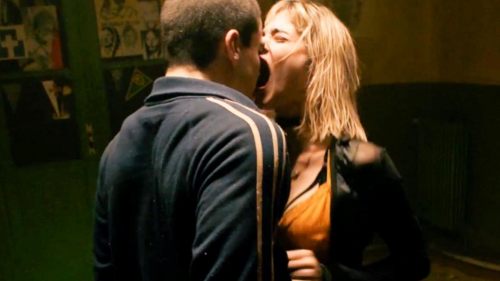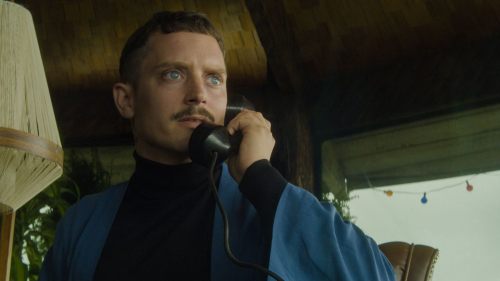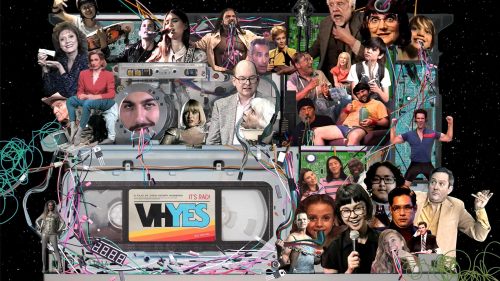Gaspar Noé Talks CLIMAX, Drugs And Disco Music
Climax is almost here. Get your tickets now!
Irreversible, Love, Enter the Void – Gaspar Noé is an auteur whose reputation precedes him. Known for a cinematic style that consists of graphic violence and exploitative storytelling, a movie-goer less familiar with the French filmmaker might not be privy to the true genius that resides each of Noé’s deep dives down the rabbit hole. His films are less about exaggerating human nature and more about revealing them, peeling back layers of the daily façade until the audience is witness to something more powerfully personal.
Now, Noé is back with another brave excursion into uncharted territory – only this time, it’s a dance movie. Climax centers around a group of French dancers who, after rehearsing in a tucked away snowy school up in the mountains, decide to reward themselves with a party. Little do they know, somebody spiked the sangria, and their celebratory evening is about to descend into a hellish, hallucinatory music-fueled nightmare.
Naturally, when the opportunity arose to speak to the renowned director on behalf of Birth.Movies.Death., I jumped at the chance. In the interview, we discuss the inspiration behind the dancers’ otherworldly choreography in Climax, Noé’s decision to operate the camera himself, and his unintentional inclusion of myriad races and sexualities.
KC: I’d like to start out by talking about your first film, I Stand Alone. What was the inspiration behind this idea of the butcher and his story?
Gaspar Noé: You know, once I finish my films, I never watch them again because it is very painful to watch the movie. I always want to re-edit it. I haven’t seen [I Stand Alone] for I don’t know how many years. The inspiration…real life, I guess. Suburban life in France. It’s kind of a French Taxi Driver. Very French. I think it’s a kind of portrayal of the working class in France, actually. A very particular story inside of the working class and the working class suburbs.
It seems to be the birth of your affinity for monologues.
I guess it serves as my basic beat for monologues, like the monologues in Love and a little bit in Enter the Void. I am always into the idea of going back to a moment with a romantic voiceover because it’s very hypnotic, especially if it’s a movie in your own language, one without subtitles. When you have one long monologue with subtitles, it becomes very literal.
Irreversible has gained an iconic status over the years due to its story being told in reverse. Where did the idea come about for the script?
The story of Irreversible is a kind of less dysfunctional rape and revenge. Like, those movies that were called Death Wish, Death Wish 2 and Death Wish 3, the rape is punished by killing someone else, and that is why it is dysfunctional. If Irreversible was played backwards, it was not because of the momentum that was behind that trope when we made it, but mostly, it’s about betrayal – it portrays the story of a book editor and his wife, and a writer who works for the book editor that has an affair with the wife, and his affairs. So, it’s over a period of six, seven years, and the whole play is made of several things that are reversed chronologically.
When Vincent Cassel and Monica Bellucci asked me, “Oh, do you have any movie project that we could do together?” I immediately tried to invent some story to do with them, because they are very romantic and they can act, and I said, “I have an idea for a movie that is told backwards and the rape is returned by some violence that is even worse than that” and that’s how the project started. We shot the movie in chronological order with the pages of the script.
For my movie Climax, I did something that was very similar, I sold the idea to my producers and they said, “Well, what’s it going to look like?” and I said, “It’s about a dance, at a music school outside Paris, and once they finish the rehearsal they go party, and things go wrong as they go wrong visually in the movie”. They said “How long?” And I said, “Probably 70 minutes, maybe two hours. I know it might contain some documentary scenes, but I cannot tell you how the movie is going to look like before we shoot the movie”. They said, “Okay, sure,” and agreed. I felt very safe because Irreversible worked that way, and it was my only commercial success. I said wow, well, we’re going to try to shoot this in chronological order, and that’s what we did, so it is very similar to Irreversible in that way too.
I re-watched Irreversible recently – am I mistaken, or did I spot you in the club scene?
Yeah, that’s me masturbating in the hardcore gay club scene. Not because I visit those clubs, but you know, Hitchcock used to appear in his own movies, Scorsese would do it sometimes. I thought, “Oh, I want to put myself in my movie”. It was also a way of surprising my mother and my father.
Is it true that you had to bribe the mafia when you were filming Enter the Void?
In some neighborhoods in Japan, mostly in Tokyo, there’s what you call a ‘local community’ that runs the block, and if you don’t ‘help the local community’, that means bring a suitcase with some cash money, they make your life impossible if you try to shoot there. It’s not so expensive. There are people who live all over Asia, there are people who say, ‘You need to help the local community’. Sometimes it’s in cash, sometimes it’s not, and it’s in the accounting of the movie. I never met any Yakuza but there was just a guy who knew which door you had to knock on for each block. It’s not a big deal.
Now you have Climax – what made you want to make a dance movie?
I don’t like musical comedies, I don’t like contemporary dance, I never go to see classical dance, but I like athletic dancers like the ones you see in my movie. It’s really outstanding, it’s very cinematic.
It’s interesting to me that there’s very little dialogue in the film. It almost seems as though the dancers are expressing themselves through movement instead. In your own words, what can dance say that dialogue can’t?
It’s like painting. What can painting say that you cannot put into words? What can music say that you cannot put into words? I think dancing is a form of expression that shows a lot of the person inside of the body who is dancing. Also, because these dancers are street dancers, they mostly dance alone, or in a battle against someone else, but they’re not very pre-programmed. They use some movement that comes from their own family of dance, like voguing, krump, and wakai, but inside of their own genre they try to be different from each other. There are things that they can do with their backs, their arms, that is fascinating, and that we are not used to seeing because they’re trying to invent their own language all the time.
So they’re not professional dancers?
No, they’re not. Sofia [Boutella] was a professional dancer, she became a dancer for Madonna, for Michael Jackson, and more, but besides her and about five other guys, most of the people had never been trained to dance. They were just playing.
The music really stood out to me, there are some really great early ‘90s tracks. What kind of sonic environment were you trying to build here?
The movie takes place in the early ‘90s so we tried not to put any tracks that came out after the mid-90s. The music added to the energy of the dancers, it makes those movements even stronger. I tried to find the most danceable tracks I had amongst my vinyl and CDs, from techno CDs or from disco, and then we called the record companies and find out the cost of using the song, and if the track had an instrumental version or not. The day we started shooting, we already had all of the tracks ready so we could make the dancers dance on them. Otherwise, it would’ve been hell if we made people dance, and then had to try to change the soundtrack. It’s not only about the editing – the music generates body movement, and it’s impossible to replace the soundtrack without it being very noticeable.
You have these really long tracking shots that follow the characters around almost like a ghost. It almost feels like a return to Enter the Void. What inspired those shots?
Irreversible, I guess. I operated the camera in Irreversible, I also operated the camera on Climax, not because I am a better operator than Benoît Debie, the cinematographer, but just because I thought that the dancers would feel much safer it was me behind the camera who was close to them, and inviting them to the right, to the left, to the screen, and more.
All of the performances, especially Sofia Boutella, feel very raw and vulnerable. Did you have to do anything specific to gain your actors’ trust?
No, I just showed to the whole bunch of dancers a two-hour edit of the best loss of control videos we could find on the net. People coming out from rave parties, junkies being arrested by the cops, footage from the ‘70s when people were overdosed with drugs. Also, these videos of people taking bath salts in Miami that had convulsions, and they get naked, get dressed, get naked, get dressed, and just scream. I wanted some people to play as if they were crackheads, some other people play like they were high, and on ecstasy, and each one could find something different to work with. I also wanted the dancers to think of the movie as the first half and the second half, because they are very much in control of themselves until the second.
Do you think a movie like this could be made in America?
No way! No, no, no. Not even in Germany! Not even in England! It’s a very French movie, I’m very proud of it. French dancers, French location, French crew, French camera. It’s a French movie.
Climax is a great blending of races, sexualities, sexual preferences – was it your intention to create this inclusion?
It was not intentional at all. When I started creating the film, I didn’t know how many [dancers] would be girls or boys, the team didn’t have any gender preferences, we didn’t have any sexual preferences, or racial preference. Also, the fact that it’s this type of dancers, it’s mostly young kids from the suburbs, it’s not kids from middle class families. Some of the kids we found were gay, lesbian, or trans, but then again, when you go to krump battles, there are mostly black and heterosexual kids there. It was a mix of all types. But for the project, specifically, the reason I chose these dancers that I have was just because of their dancing abilities and their charisma.



